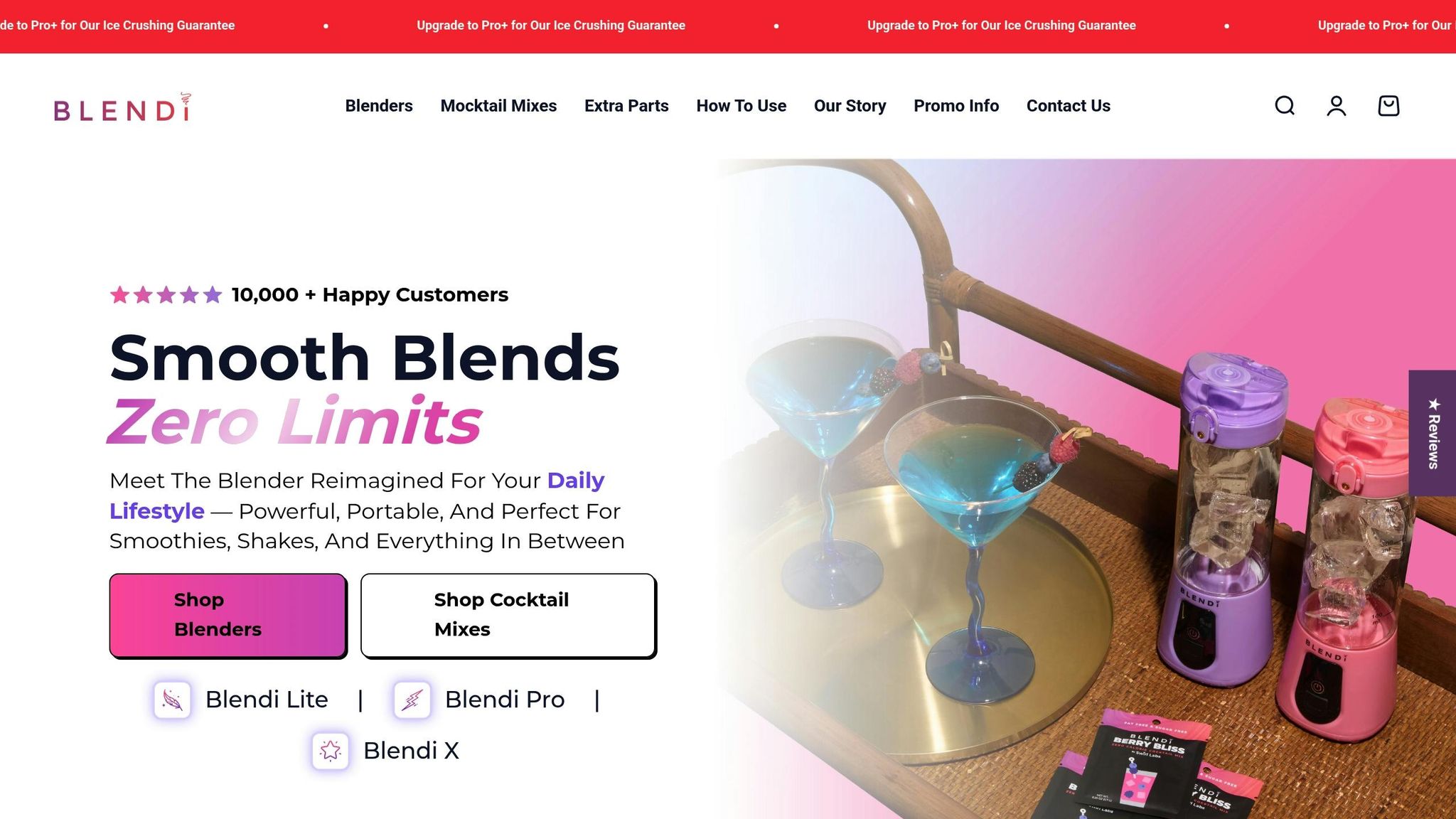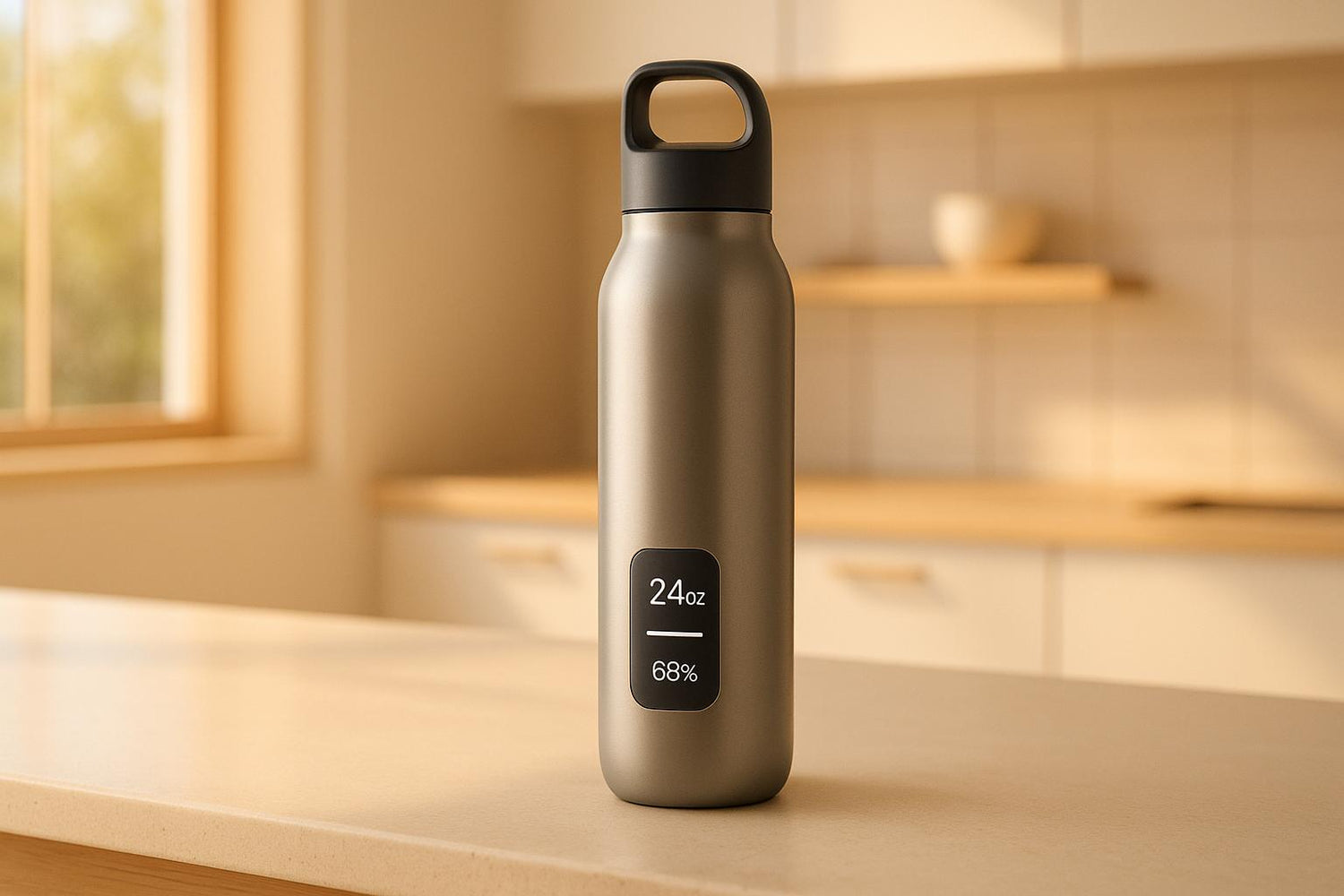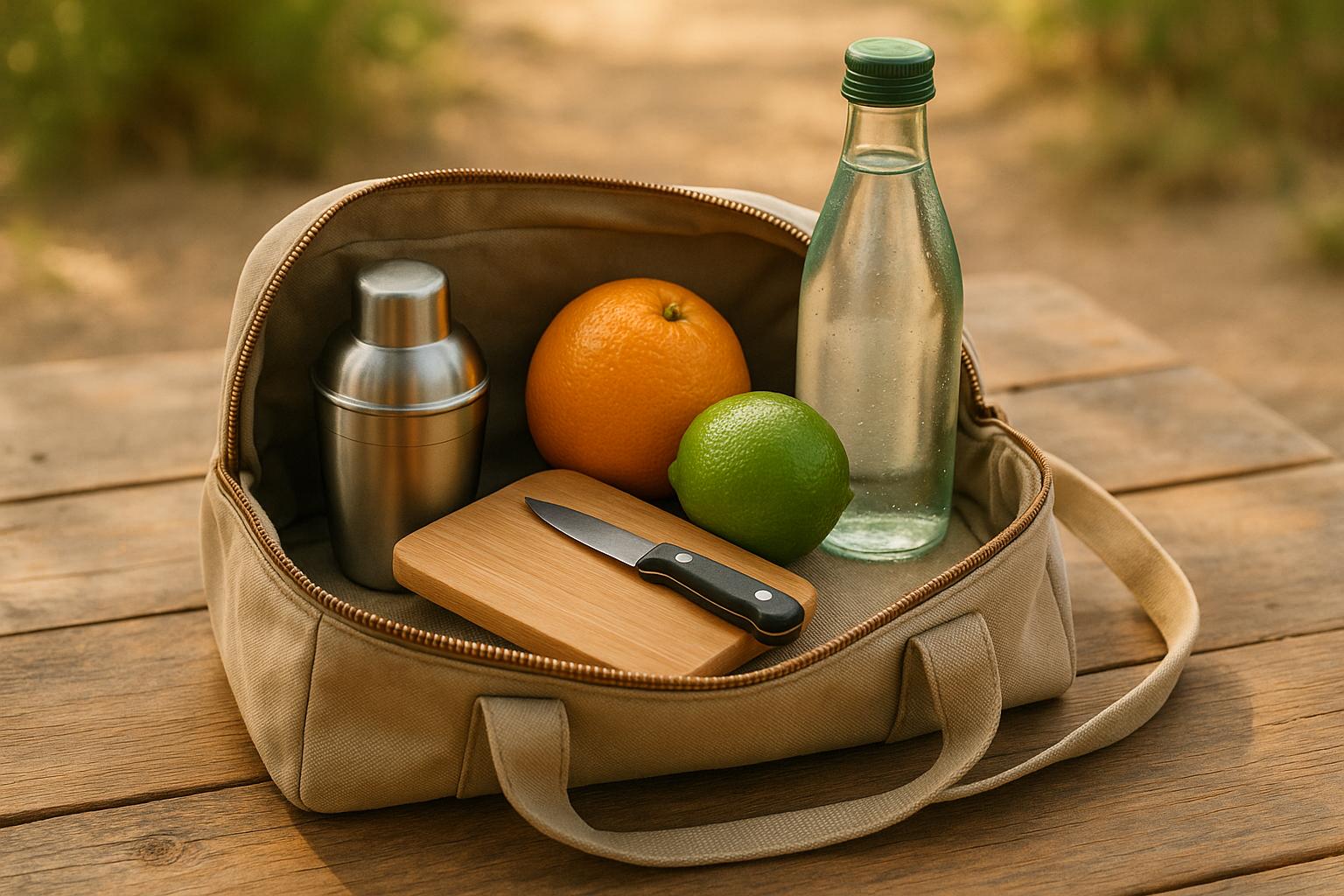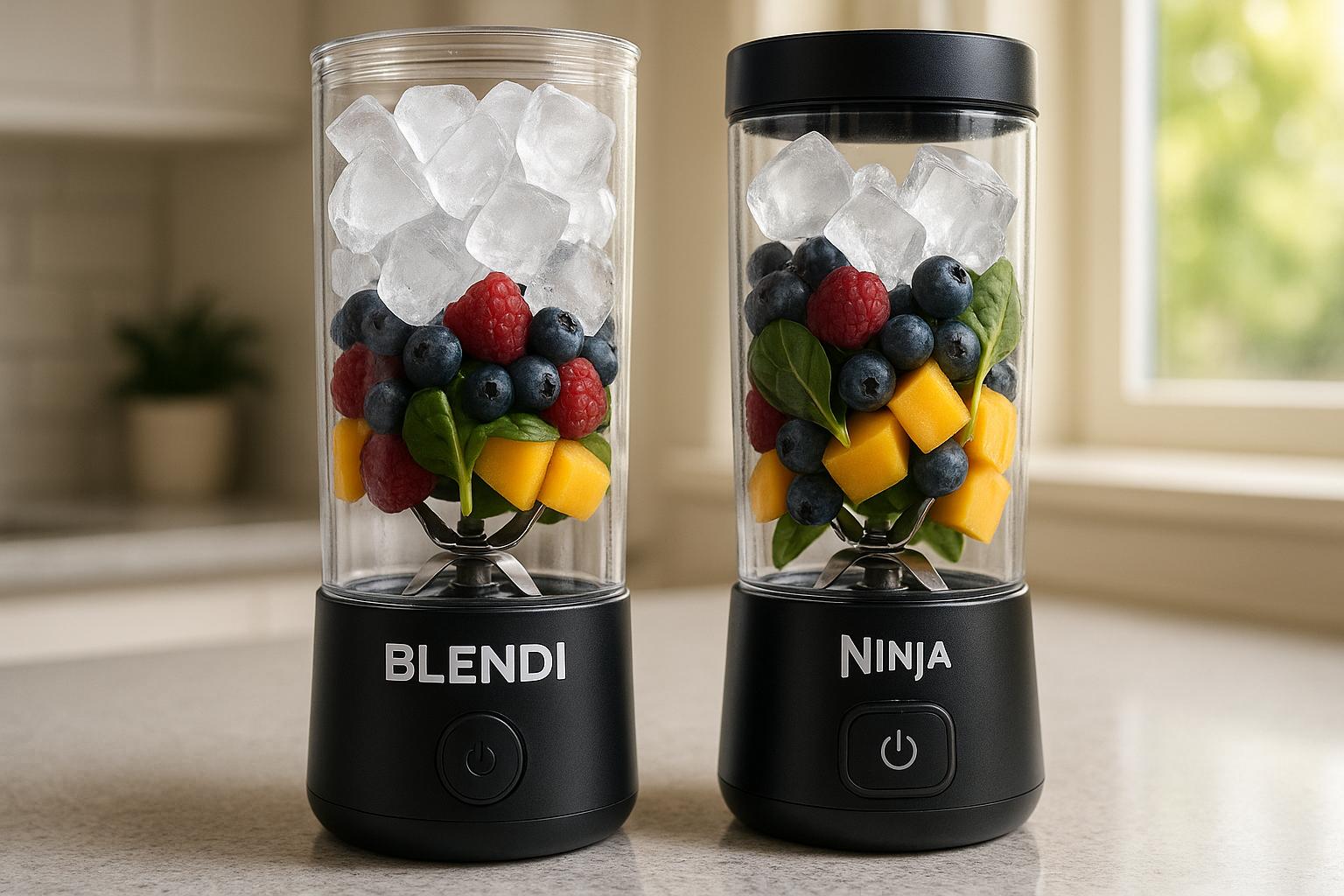Smart hydration monitoring uses advanced sensors and AI to help you maintain optimal water intake. This technology provides real-time insights tailored to your body's needs, addressing issues like dehydration, which affects 75% of Americans and can impair cognitive and physical performance. From wearable sensors to smart water bottles, these tools offer personalized hydration plans by analyzing sweat, bioimpedance, and environmental factors.
Key takeaways:
- Why it matters: Dehydration impacts health, reducing cognitive function and athletic performance.
- How it works: Devices use sensors (bioimpedance, sweat analysis) and AI for accurate hydration tracking.
- Who benefits: Athletes, older adults, and anyone aiming for better hydration habits.
- Product types: Options range from entry-level reminders to high-end systems with advanced metrics.
Hydration monitoring is becoming more accessible and user-friendly, integrating with apps and wearables to fit seamlessly into daily life. Whether you're an athlete or just want to improve your health, smart hydration tools can make a difference.
Hydration Monitoring & Enhancement: HEALBE GoBe3 + LIQUIDI.V. Smarter Hydration CTT®️additives
Core Technologies in Smart Hydration Monitoring
Smart hydration monitoring combines advanced sensors and artificial intelligence to deliver real-time insights about your body's hydration status. These technologies work together to provide personalized and accurate hydration data.
Sensor Types and Their Functions
Modern hydration monitoring relies on five main types of sensors: electrical, optical, thermal, microwave, and multimodal sensors. Among these, electrical sensors are widely used in wearable devices because they are easy to integrate. They work by sending small electrical currents through the skin to measure conductivity - hydrated tissues conduct electricity more effectively than dehydrated ones.
"Our experiments demonstrated that arm bioimpedance is not only sensitive to hydration changes but also aligns closely with whole-body hydration measurements."
– Matija Jankovic, Postdoctoral Researcher, Lu's lab, The University of Texas at Austin
Electrical sensors vary in precision depending on whether they use capacitance or conductance methods, which differ in how deeply they measure hydration. Optical sensors, on the other hand, provide molecular-level details. For instance, the SpectroPhon DBM (Dehydration Body Monitor), found in devices like the Samsung Gear S2 and Gear Fit2, uses photoplethysmographic sensors to measure sodium ion levels in sweat.
Sweat analysis sensors are designed to track sweat composition in real time. A platform developed by Wang et al. measures both sweat rate and electrolyte concentration without requiring calibration. Multimodal sensors take things further by combining different technologies for greater accuracy. For example, Yao et al. created a wearable hydration sensor with flexible silver nanowire electrodes and Bluetooth connectivity, enabling precise data collection via a wristband. These advancements provide the foundation for advanced analytics that turn raw sensor data into actionable insights.
Data Analytics and AI Integration
Artificial intelligence plays a central role in transforming raw sensor data into meaningful hydration insights. By analyzing data streams from multiple sensors, AI systems improve accuracy and allow for individualized hydration assessments. Non-linear machine learning models, such as Random Forest and decision trees, often outperform traditional linear methods in interpreting sensor data.
"ML algorithms have been shown to enhance existing technologies for hydration monitoring by processing data streams from multiple sensors, increasing measurement accuracy, and enabling individualised hydration assessments."
– Apparaju Sreeharsha, Sarah McHale, Nonso Nnamoko, and Ella Pereira, Authors of "Towards Data-Driven Hydration Monitoring"
For example, decision tree algorithms have achieved up to 93% accuracy in detecting hydration levels using electrodermal activity data. In 2024, Kulkarni et al. introduced a real-time Android tool that combined Empatica E4 wearable sensors with machine learning. Using 14 features derived through deconvolution-based techniques, the system achieved this high level of accuracy. Sensor fusion, which integrates data from multiple sensors, further boosts reliability.
"Information fusion techniques, which combine data from multiple sensors, significantly improved the accuracy and reliability of fatigue assessments."
– Computers in Biology and Medicine
AI is also being used for visual analysis, with algorithms now able to detect hydration changes through facial skin appearance in selfies. Additionally, heart rate variability analysis has proven effective; Severeyn et al. demonstrated that ECG signals could distinguish between hydration and dehydration phases in athletes, allowing for early detection. These innovations in AI and sensor integration are shaping the future of hydration monitoring.
New Developments in Hydration Technology
Recent advancements are making hydration monitoring more accurate, convenient, and accessible. Flexible sensor platforms are leading the way, offering seamless integration into everyday items. For instance, Madhvapathy et al. developed a cost-effective patch using flexible printed circuit boards. This patch measures skin conductivity and diffusivity to estimate water content up to 1 millimeter deep and communicates wirelessly with smartphones via NFC.
Smart fabrics are another exciting development. By embedding sensors directly into textile fibers, these systems provide continuous hydration monitoring without the bulk of traditional devices. Meanwhile, miniaturized biosensors are now being incorporated into everyday items like clothing and wearables.
AI-driven personalization has also advanced significantly. Modern systems now analyze factors like sleep patterns, exercise intensity, environmental conditions, medications, and diet to offer tailored hydration recommendations. Veeralingam et al. developed a body hydration analysis system that uses impedance variations and an AI-powered k-nearest neighbor algorithm to enhance running performance by monitoring skin hydration.
New methods are also addressing challenges like temperature-induced signal distortions. Dual-stage regression techniques now improve the accuracy of total body water loss estimates.
"Multimodal systems that integrate various sensors with artificial intelligence–driven analysis hold promise for personalized hydration management."
– Nazim A Belabbaci, Raphael Anaadumba, Mohammad Arif Ul Alam, et al., Authors of "Recent Advancements in Wearable Hydration-Monitoring Technologies"
Non-invasive methods are expanding beyond traditional skin-contact sensors. Researchers are now exploring hydration monitoring through breath, voice, and gait analysis using smartphones. These options are especially useful for individuals with skin sensitivities or specific occupational needs. Together, these advancements are shaping a future where hydration monitoring fits seamlessly into everyday life, offering more choices to suit individual lifestyles.
How to Choose the Right Smart Hydration Monitoring Product
Finding the perfect smart hydration monitoring product comes down to matching your specific needs, budget, and daily routine. With prices ranging widely, it’s important to focus on the features that matter most to you. Below, we’ll break down key factors to consider, how to set up your device, and ways to make the most of your hydration data.
Key Factors for Product Selection
When it comes to smart hydration devices, accuracy and sensor technology should top your list - especially if you’re an athlete or have specific health concerns. Devices equipped with advanced sensors, like bioimpedance or sweat analysis, deliver more precise insights compared to basic reminder-based systems. Many of these devices also offer automatic tracking and come highly rated by users.
App compatibility and platform integration are equally important. Make sure the device’s app works with your smartphone and syncs with your preferred health platforms. For example, the waterdrop® Hydration App requires iOS 14+ or Android 8+ but doesn’t support tablets. Similarly, the H2OPal Smart Water Bottle currently has an iOS app, with an Android version "coming soon", and integrates with Apple Health, Fitbit, and Amazon Alexa.
Another consideration is battery life versus convenience. Battery performance varies, with some devices lasting just a day while others stretch up to a week.
Here’s a quick breakdown of device categories to help you decide:
| Device Category | Price Range | Key Features | Best For |
|---|---|---|---|
| Entry-Level | $30 - $70 | Basic reminders, app integration | Casual users, beginners |
| Mid-Range | $70 - $150 | Real-time monitoring, basic health metrics | Fitness enthusiasts |
| High-End | $150 - $300 | Advanced metrics, sweat analysis, personalized insights | Athletes, serious health trackers |
| Premium | $300+ | Professional-grade analytics, multi-platform sync | Medical applications, elite athletes |
Consider your user group as well. For instance, the Flowbio S1 is tailored for athletes and syncs with sports apps like Garmin, Wahoo, and Zwift, though its app is currently iOS-only. Similarly, the Nix Hydration Biosensor provides detailed insights via its Nix Solo app and pairs with Garmin, Apple Watch, or cycling computers.
Setup and Calibration Guide
Once you’ve chosen the right product, setting it up correctly is key to getting accurate data. Start by downloading the app and creating an account with your basic health information.
Calibration requirements depend on the device. Wearable sensors often need a 2–3 day baseline measurement period, during which you should stick to your usual hydration habits. For smart water bottles, you’ll need to input the bottle’s capacity and set daily hydration goals based on factors like your weight, activity level, and climate.
App synchronization is typically automatic after Bluetooth pairing, though occasional connectivity issues can arise. To avoid problems, ensure your smartphone’s operating system meets the device’s requirements and keep both the app and device updated.
For wearables, sensor contact optimization is critical. Wear the device snugly - about one finger-width above your wrist bone - for consistent and accurate readings.
How to Use Hydration Data Effectively
Getting the most out of your hydration data starts with understanding your baseline. AI algorithms need time to learn your patterns, so expect more accurate recommendations after one to two weeks of use. During this time, the device will account for your activity levels, environmental conditions, and how your body responds to hydration.
Interpreting alerts and recommendations involves understanding the context. Many devices factor in data like temperature, humidity, and UV index from weather APIs to predict fluid loss. For example, a hydration alert during an intense workout or on a hot day reflects both environmental conditions and your personal data.
Rather than focusing on individual readings, look at trends over time. Your hydration needs can shift based on factors like sleep, stress, diet, and activity levels. Weekly patterns offer a clearer picture of your overall hydration habits.
For a more complete view of your health, consider integrating hydration data with other wellness metrics. Syncing with apps like Apple Health or Google Fit can help you connect hydration with sleep quality, exercise performance, and energy levels.
Finally, personalization improves with use. As the device gathers more information about your sleep, exercise intensity, and daily habits, it fine-tunes its recommendations. Providing feedback through the app can make these insights even more accurate over time.
sbb-itb-75eb6cf
Eco-Friendly and Portable Hydration Solutions
The move toward sustainable hydration products reflects a growing awareness of environmental issues among American consumers. Smart hydration monitoring no longer has to come at the cost of the planet. Today’s eco-conscious options combine cutting-edge technology with responsible materials and portable designs, perfectly suited for active lifestyles.
Eco-Friendly Materials in Smart Drinkware
Modern smart hydration products are increasingly built with materials that minimize environmental impact while maintaining durability and usability. Popular choices include stainless steel, valued for its strength and recyclability; BPA-free plastics, which are lightweight, portable, and free of harmful chemicals; and glass, which eliminates chemical leaching and often comes with protective silicone sleeves for added durability. Each material contributes to sustainability while offering unique health and performance benefits.
Manufacturers are incorporating advanced features, such as Bluetooth connectivity, app integration, and real-time hydration tracking using sensors like bioimpedance or sweat analysis, all without compromising on eco-friendliness. Features like USB charging and modular designs for easy cleaning further extend the lifespan of these products. Research highlights how adopting reusable drinkware plays a crucial role in reducing plastic waste and encouraging sustainable habits. Brands like BLENDi exemplify how eco-conscious design can align with the needs of modern hydration.
BLENDi Portable Blender Water Bottles

BLENDi combines sustainability with portability, offering an innovative solution for staying hydrated on the go. Made with durable, BPA-free materials, these products promote safety while reducing reliance on single-use plastics, blending eco-friendly design with advanced blending technology.
Portability features make BLENDi an ideal choice for active individuals. Its compact, lightweight design fits easily into gym bags and car cup holders, while USB rechargeable functionality ensures you can use it anywhere. The blend-and-drink convenience means you can prepare hydrating smoothies, protein shakes, or flavored drinks in the same container.
"I'm always rushing between work and workouts, and this blender has been a game changer. I can make a shake in the car, at my desk, or even at the gym. It's fast, charges quickly, and fits in my tote." - Esther B., Verified Buyer
Durability and performance are key highlights of BLENDi’s Pro+ and X models, which can crush ice and frozen fruit to create smooth blends in about 30 seconds. The detachable design simplifies cleaning without requiring complex disassembly, and its leak-proof construction ensures mess-free transport.
"Clean-up used to be why I avoided smoothies. But with this, I just blend, rinse, and done. The detachable parts make it simple, and I've had no leaks or mess." - Ariana O., Verified Buyer
Accessory options enhance the overall experience by providing tools for protection and convenience. BLENDi offers travel cases and additional water bottles to make preparing and transporting healthy drinks even easier.
With prices ranging from $22.50 for the Lite model to $59.99 for the advanced X model, BLENDi makes sustainable hydration accessible. For those in the U.S. who value both environmental responsibility and convenience, BLENDi proves that eco-consciousness can coexist with functionality and portability.
Smart Hydration for a Healthier Lifestyle
Smart hydration monitoring is reshaping how we manage our daily water intake, turning it from a reactive task into a proactive habit. By providing continuous feedback, instant alerts, and personalized recommendations based on your activity levels and surroundings, these tools help you stay ahead of dehydration before it even begins.
Why does this matter? Chronic dehydration is linked to some serious health risks - it can shorten life expectancy by up to four years and increase the risk of dementia by nearly 50%. Yet, nearly 43% of U.S. adults consume less than four cups of water daily. For those in athletic or demanding work environments, real-time hydration tracking has been shown to improve fluid intake compliance by up to 30%. This not only supports peak performance but also minimizes dehydration-related risks.
Incorporating hydration monitoring into your routine is easier than you might think. Whether you use wearable sensors or follow app-based guidance, the key is consistency. When paired with eco-friendly, portable drinkware, these tools create a seamless and sustainable way to stay hydrated while promoting overall wellness.
Experts like Professor Nanshu Lu and Professor Mark Kendall highlight the preventative power of real-time hydration tracking. By addressing dehydration early, these systems help prevent more serious health issues down the road. And with advancements in AI-powered analytics and integration into broader health platforms, personalized hydration management is becoming increasingly accessible, making it easier than ever to lead a health-conscious, sustainable lifestyle.
FAQs
How do smart hydration trackers figure out how much water I need?
Smart hydration trackers are equipped with cutting-edge sensors that keep tabs on important physiological signals like sweat composition, skin conductivity, and electrolyte levels. By measuring things such as how much you sweat and the amount of sodium you lose, these devices can determine your hydration needs in real time.
Using proprietary algorithms, they process this data to deliver hydration recommendations that are tailored to your body's unique patterns. Whether you're hitting the gym, traveling, or tackling daily tasks, these trackers help ensure you're staying properly hydrated throughout your day.
What sets basic smart hydration products apart from premium ones?
The key distinctions between basic and premium smart hydration products come down to their features and technology. Premium models often boast advanced sensors, Bluetooth connectivity, personalized hydration plans, and even self-cleaning functions. These extras cater to individuals seeking precise tracking and a more tailored experience.
On the other hand, basic models stick to the essentials, offering hydration reminders and simple tracking with straightforward technology. While they effectively fulfill basic needs, premium options shine with their greater accuracy, connectivity features, and customization capabilities, making them especially appealing to fitness enthusiasts or anyone deeply committed to maintaining optimal hydration.
How does smart hydration monitoring work with my health apps and devices?
Smart hydration monitoring integrates effortlessly with your favorite health apps and devices, letting you track your water intake right alongside other wellness stats. Many systems pair with platforms like Apple Health, Fitbit, or MyFitnessPal, giving you a single dashboard to view your hydration habits and overall health.
Wearable devices with hydration tracking features make it even easier. They can log how much water you drink, send timely reminders to help you stay on track, and even provide instant feedback. This kind of integration keeps you focused on your hydration goals without disrupting your existing health routine.




Leave a comment
This site is protected by hCaptcha and the hCaptcha Privacy Policy and Terms of Service apply.